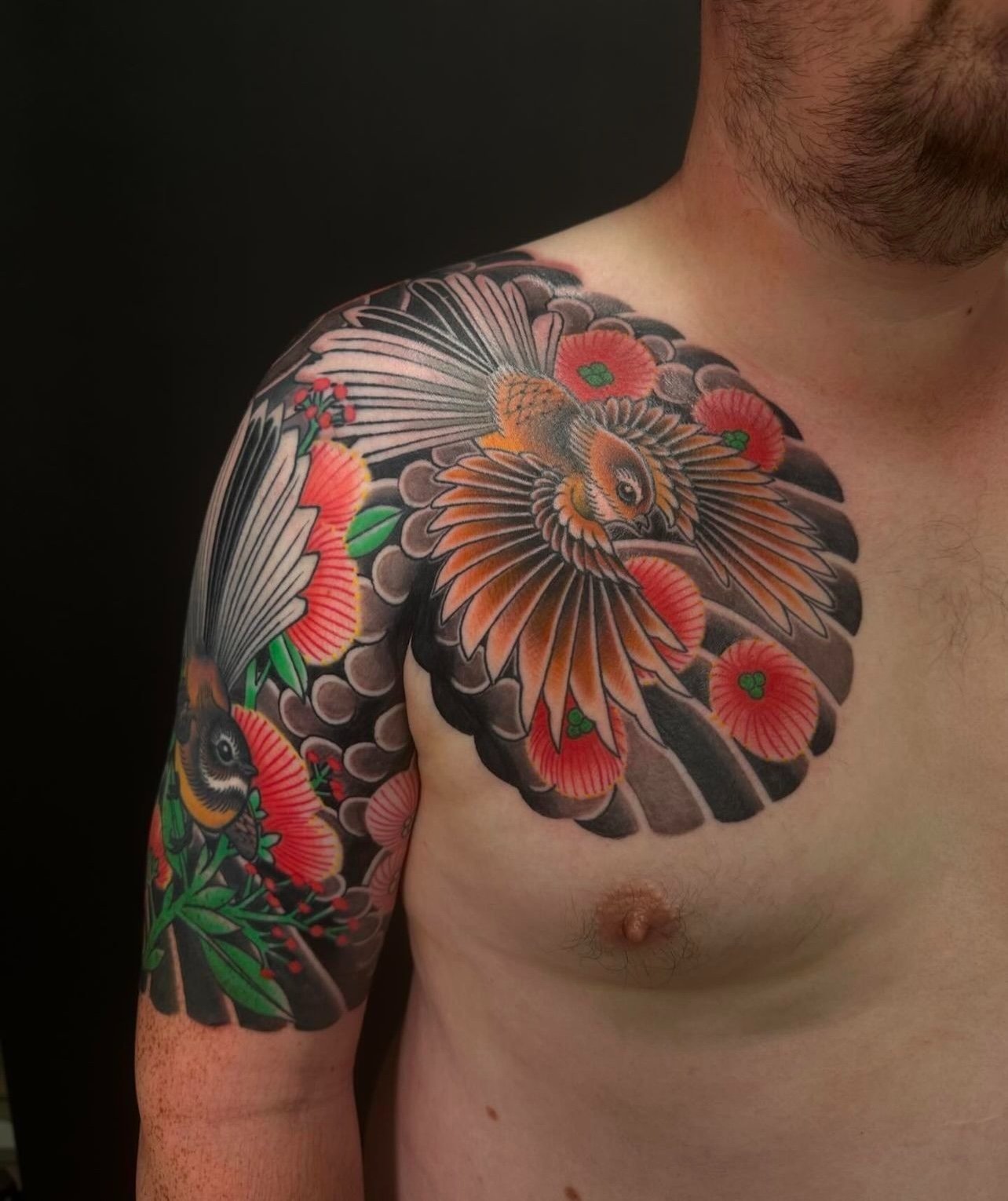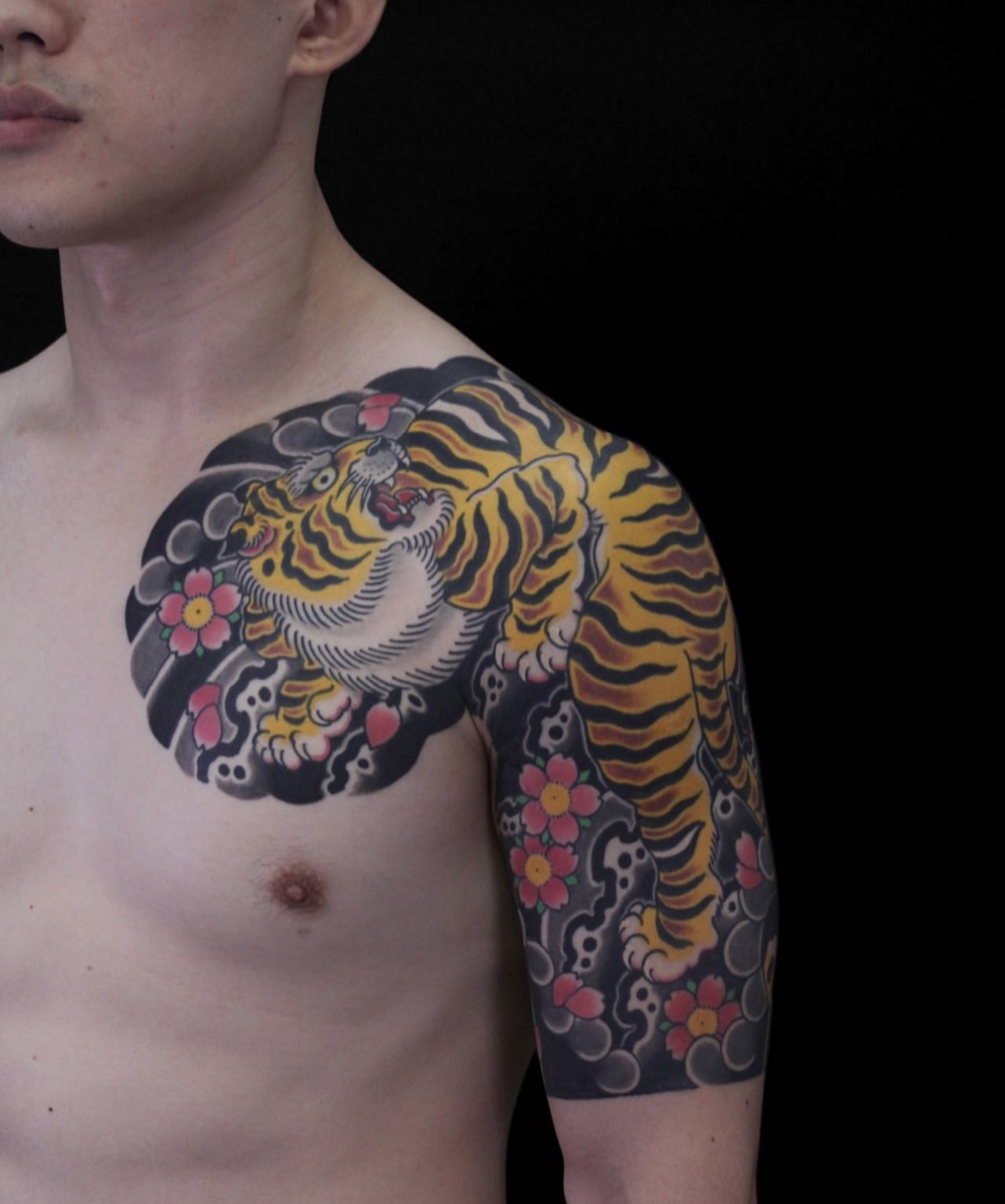Japanese irezumi tattoos are steeped in tradition and symbolism, often telling intricate stories through their designs. One popular motif is the combination of a snake and chrysanthemum sleeve tattoo, each element carrying its own significant meaning.
The Snake: Symbol of Power and Resilience
In Japanese culture, the snake holds diverse symbolism, often associated with power, protection, and transformation. Known as "hebi," it represents agility, stealth, and adaptability. In folklore, snakes are revered as guardians of sacred spaces and possessors of esoteric knowledge.
When incorporated into tattoos, the snake often embodies resilience and personal growth. Its sinuous form wrapping around the wearer's arm or torso signifies protection against adversity and the ability to shed old skin, metaphorically embracing change and renewal.
The Chrysanthemum: Emblem of Beauty and Impermanence
The chrysanthemum, or "kiku," carries its own significance in Japanese culture. As the national flower of Japan, it symbolizes beauty, elegance, and the transient nature of life. Often associated with autumn, it serves as a reminder to cherish fleeting moments and embrace the inevitability of change.
In tattoos, the chrysanthemum adds a touch of grace and delicacy to the design. Its intricate petals and vibrant colors contrast with the snake's dynamic energy, creating a visual balance that speaks to the harmony of opposites.
Synthesis: Blending Strength and Beauty
The combination of the snake and chrysanthemum in a sleeve tattoo represents a harmonious blend of strength and beauty, resilience and grace. It reflects the wearer's journey of personal growth and transformation, acknowledging life's complexities and embracing them with courage and dignity.
Beyond their individual symbolism, these elements come together to create a narrative that is deeply personal to the wearer. Whether it signifies overcoming challenges, embracing change, or honoring cultural heritage, the snake and chrysanthemum sleeve tattoo is a testament to the enduring power of body art as a form of self-expression and storytelling.
In conclusion, the Japanese irezumi snake and chrysanthemum sleeve tattoo is a striking fusion of tradition, symbolism, and personal meaning. It speaks to the resilience of the human spirit and the beauty found in life's fleeting moments, serving as a powerful reminder to embrace change and find strength in adversity.


































